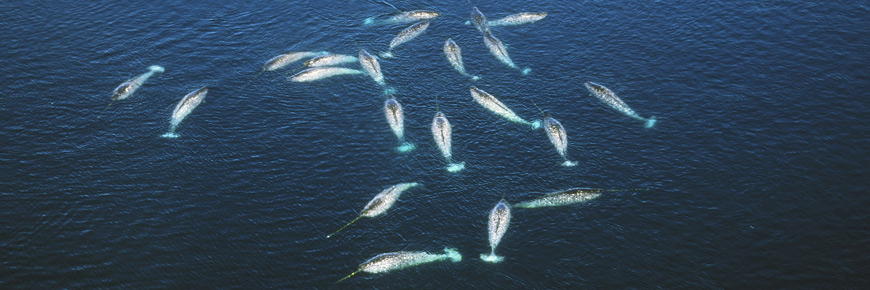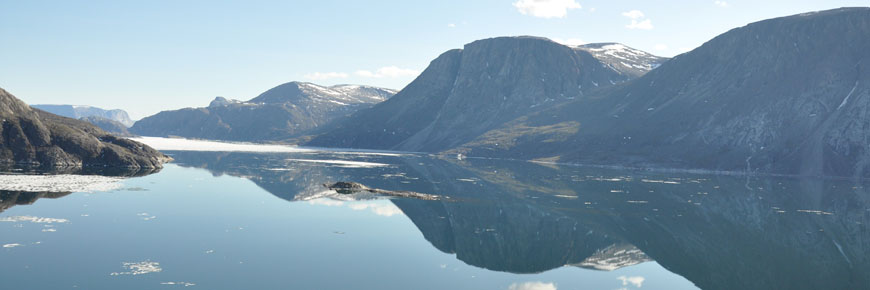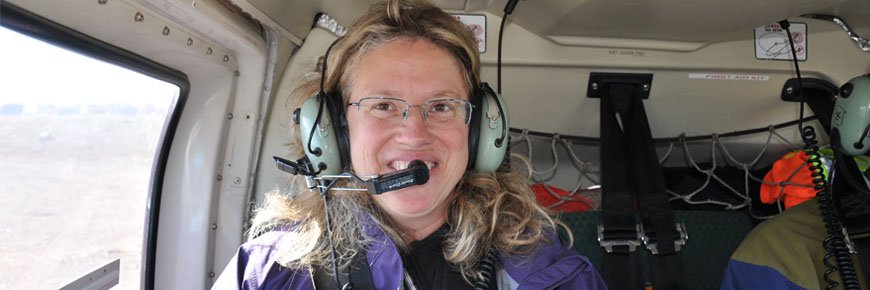
Narwhals in Tallurutiup Imanga (Photo: Mark Mallory)
Testing the waters: one advisor's role in creating new National Marine Conservation Areas
Diane Blanchard has a unique role in helping create National Marine Conservation Areas (NMCAs)
The first time Diane Blanchard saw narwhals, her heart skipped a beat.
A marine biologist by training, Diane is Parks Canada’s Marine Areas Establishment Advisor. As part of the Protected Areas Establishment team, she assists with the identification and selection of marine sites for protection. She also helps with feasibility assessments where consultation with Indigenous, community and stakeholder groups plays a major role.
And narwhals are one of her favourite stakeholder groups. Remembering her first glimpse of the whales in Tallurutiup Imanga, she says,” I’m usually very expressive, and on that day I was extremely expressive.”

Did you know?
Lancaster Sound in Inuktitut is “Tallurutiup Tariunga”
In August of this year, she will have another opportunity to visit an important narwhal concentration area. She will travel to Tremblay Sound in the Tallurutiup Imanga region of Canada’s High Arctic.
An area of critical ecological importance to marine mammals and arctic sea birds,Tallurutiup Imanga is a candidate for National Marine Conservation Area status.
In assisting the Steering Committee conducting the feasibility assessment, Diane has worked extensively with Inuit, an experience she describes as “amazing and enlightening.” She admires their traditional way of living and the ingenuity of their ancestors in adapting to a land that is at once beautiful and unforgiving.
Learning the story of a region

Diane adds that Inuit traditional knowledge provided an essential dimension to the overall understanding of Tallurutiup Imanga. The knowledge of the local people goes back thousands of years and immeasurably strengthens what she calls “the story the area is telling us.” If we know the entire story, she notes, we will know how to protect the area.
Consulting with stakeholders is, for Diane, the most important part of establishing a National Marine Conservation Area: “We need to have the communities (in this case, Inuit) involved, to tell us exactly how they see it—and what their concerns are.”
As well as local communities, Parks Canada also works with stakeholders, including industry, as well as government departments to determine the potential impacts and opportunities linked to the creation of a protected area.
“When we consult,” she says, “we bring together social, ecological and economic information. It’s always a balance.”
The process of creating new protected areas can take many years and involves tact, diplomacy and perseverance. “It’s a challenge,” she says. “By creating a protected area, we have to respect the fact that we are changing the way the local people are living and experiencing the environment.” Honest, respectful and informed consultation is the key to the success and long-term health of a National Marine Conservation Area.
Diane feels that the work she is doing is vital.
The ocean nourishes us, and it’s in bad shape presently. We need to protect it.
- Date modified :